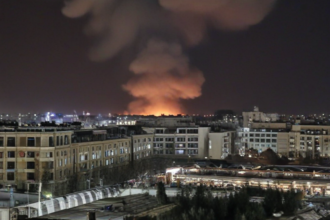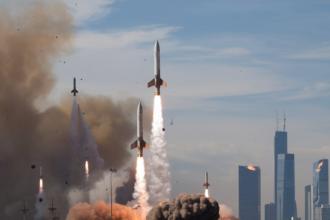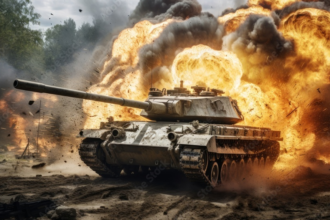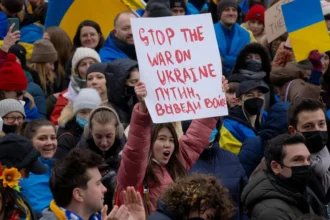In the midst of Russia’s ongoing invasion of Ukraine, a new and deadly threat has emerged: the extensive use of drones in warfare. This advanced technology has significantly altered the dynamics on the battlefield, creating a more immediate and dangerous environment for soldiers and civilians alike. Our correspondents spent time with a Ukrainian drone unit near the town of Lypa, offering an in-depth look into this evolving aspect of the conflict.
The Drone Battlefield
Russia’s invasion has cast Ukraine into darkness and its people deep into war’s bleak future. The use of drones has become a critical component of Ukraine’s defense strategy, particularly in areas with limited movement on the front lines. Despite some Russian gains in pockets of the East, Ukrainian drones have played a vital role in halting the advance.
A resident of Lypa near the Russian border shared her harrowing experience with the relentless drone attacks. “Things were flying over you, right over you and near you. Everything was shooting all around, everything was exploding all around, everything was banging. It was so scary there, it was impossible to even get out of the cellar. It was very, very scary,” she recalls, visibly shaken.
Inside the Drone Command Centers
Hidden in underground command centers, the Ukrainian National Guard’s drone teams work tirelessly to counter the Russian drone threat. These drones, equipped with precision capabilities, can carry bombs that target enemy shelters, infantry, and armored vehicles. “They’re cheap and devastatingly precise,” according to a drone operator.
The frontline is a dangerous place, with both sides employing advanced drone technology. It’s a war of infantry, of artillery, but now it’s also a drone war. There are drones everywhere here. In fact, this frontline is about 10 kilometers long, and at any time there are dozens of drones in the air, Russian and Ukrainian.
The Battle for Control
The Ukrainian drone units conduct various missions, from surveillance to direct attacks on Russian positions. The constant threat of drone and glide bomb attacks makes every movement perilous. “We have to move fast,” says an operator as they rush to find cover. “This is what drones and glide bombs have done to Lypa.”
The Ukrainian forces have gained about 500 meters of territory from the Russians, but this progress has been hard-fought. The use of drones has given them a tactical advantage, but Russian glide bombs remain a significant threat. “When it comes to drone warfare, the Ukrainians have the advantage, but as far as glide bombs are concerned, Russia has a serious upper hand,” notes the company commander.
The Future of Warfare
As technology continues to evolve, so do the methods of warfare. The battlefield in Ukraine is a testament to this transformation. The presence of drones has made the fighting more immediate and responsive, heightening the dangers for those involved.
In a chilling demonstration of the new warfare dynamics, our correspondents witnessed drone operators launching attacks in real-time. “Every day, about 100 enemy soldiers die because of these drones,” claims an operator. “We have 100 kilometers of frontline, so you can imagine how many enemies die every day because of drones, not because of artillery.
A New Era of Conflict
The relentless drone and glide bomb attacks have turned places like Lypa into desolate war zones. Drones were barely a factor in this war a year ago. Now they are everywhere, always. The Ukrainian drone units continue their fight, adapting to the ever-changing threats posed by Russian technology.
As the team moves to another position, they encounter the “Boogyman” drone, a heavy bomber capable of carrying a 10-kilogram bomb. It’s big enough to take out an armored vehicle or a command post. The drone has to be launched quickly to avoid detection and counter-attacks by Russian forces.
This highlights the grim reality of modern warfare, where technology and innovation play an increasingly pivotal role. As Ukraine and Russia continue their battle, the use of drones has undeniably transformed the conflict, setting a precedent for future wars.








